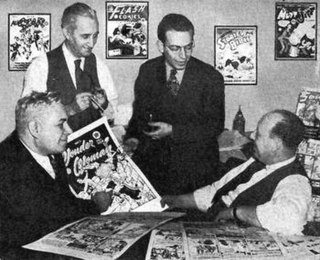
Maxwell Charles Gaines was a pioneering figure in the creation of the modern comic book.

An American comic book is a thin periodical originating in the United States, on average 32 pages, containing comics. While the form originated in 1933, American comic books first gained popularity after the 1938 publication of Action Comics, which included the debut of the superhero Superman. This was followed by a superhero boom that lasted until the end of World War II. After the war, while superheroes were marginalized, the comic book industry rapidly expanded and genres such as horror, crime, science fiction and romance became popular. The 1950s saw a gradual decline, due to a shift away from print media in the wake of television and the impact of the Comics Code Authority. The late 1950s and the 1960s saw a superhero revival and superheroes remained the dominant character archetype throughout the late 20th century into the 21st century.
See also: 1920s in comics, other events of the 1930s, 1940s in comics and the list of years in comics
Notable events of 1939 in comics. See also List of years in comics.
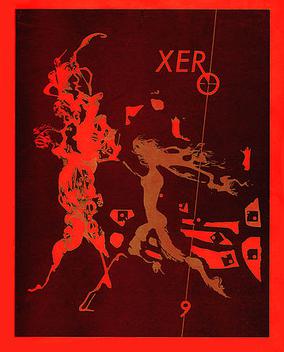
Xero was a fanzine edited and published by Dick Lupoff, Pat Lupoff and Bhob Stewart from 1960 to 1963, winning a Hugo Award in the latter year. With science fiction and comic books as the core subjects, Xero also featured essays, satire, articles, poetry, artwork and cartoons on a wide range of other topics, material later collected into two hardcover books.
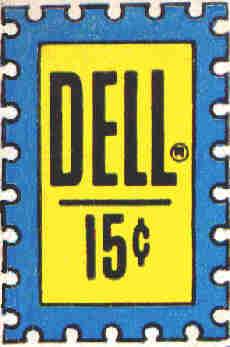
Dell Comics was the comic book publishing arm of Dell Publishing, which got its start in pulp magazines. It published comics from 1929 to 1974. At its peak, it was the most prominent and successful American company in the medium. In 1953 Dell claimed to be the world's largest comics publisher, selling 26 million copies each month.
Notable events of 1938 in comics. See also List of years in comics.
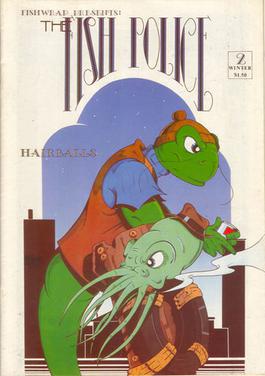
Fish Police is a comic book series by American cartoonist Steve Moncuse. The plot centers on law and crime in a fictional underwater metropolis with the protagonist, Inspector Gill, trying to solve various crimes, often Mafia-related, while avoiding being seduced by the buxom Angel Jones. The comic featured several marine species as its characters, while the plots and dialogue were reminiscent of film noir.
Notable events of 1937 in comics. See also List of years in comics.
Notable events of 1936 in comics. See also List of years in comics.
Notable events of 1935 in comics. See also List of years in comics.

The Funnies was the name of two American publications from Dell Publishing, the first of these a seminal 1920s precursor of comic books, and the second a standard 1930s comic book.

Everett M. Arnold, also known as Busy Arnold, was an American publisher and an early comic-book entrepreneur whose company Quality Comics published during the 1930s and 1940s period fans and historians call the Golden Age of Comic Books. He was also instrumental in the publishing arrangement that led to Will Eisner's newspaper Sunday-supplement comics series The Spirit.
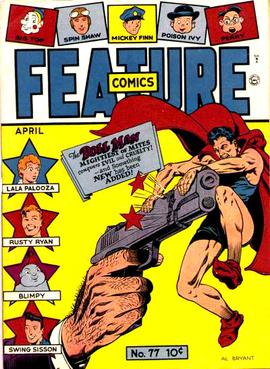
Feature Comics, originally Feature Funnies, was an American comic book anthology series published by Quality Comics from 1939 until 1950, that featured short stories in the humor genre and later the superhero genre.
The Eastern Color Printing Company was a company that published comic books, beginning in 1933. At first, it was only newspaper comic strip reprints, but later on, original material was published. Eastern Color Printing was incorporated in 1928, and soon became successful by printing color newspaper sections for several New England and New York papers. Eastern is most notable for its production of Funnies on Parade and Famous Funnies, two publications that gave birth to the American comic book industry.

Michael Terry Gilbert is an American comic book artist and writer who has worked for both mainstream and underground comic book companies.

Funnies on Parade is an American publication of 1933 that was a precursor of comic books. The eight-page publication featured reprints of such popular syndicated comic strips as The Bungle Family, Joe Palooka, Keeping Up with the Joneses, Mutt and Jeff, Reg'lar Fellers, and Somebody's Stenog. Creators included F. O. Alexander, Gene Byrnes, Al Capp, Clare Victor Dwiggins, A. E. Hayward, C. M. Payne, Al Smith, and Harry J. Tuthill.
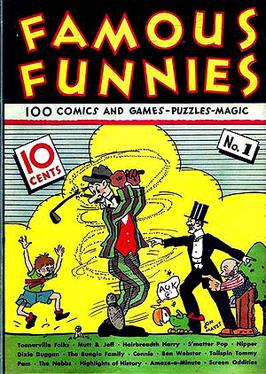
Famous Funnies is an American comic strip anthology series published from 1934 to 1955. Published by Eastern Color Printing, Famous Funnies is considered by popular culture historians as the first true American comic book, following seminal precursors.
Super Duck was a comic book character created in 1943 for what was then MLJ Comics by staff artist Al Fagaly. As his name implies, Super Duck was originally a parody of Superman, even down to a red and blue costume. But his time as a superhero was short, and by late 1944 his stories became more conventional, in the Disney/Carl Barks mode.
George Leonard Carlson was an illustrator and artist with numerous completed works, perhaps the most famous being the dust jacket for Gone with the Wind. He is cited by Harlan Ellison as a "cartoonist of the absurd, on a par with Winsor McCay, Geo. McManus, Rube Goldberg or Bill Holman." Comic book scholar Michael Barrier called him "a kind of George Herriman for little children". In the Harlan Ellison Hornbook preface to his essay on Carlson, Ellison relates how he contacted Carlson's daughters and attempted to get the material they sent him preserved in a museum or archive, to no avail. According to Paul Tumey of Fantagraphics, Carlson's book Draw Comics! Here's How - A Complete Book on Cartooning was included in an exhibit on Art Spiegelman in the Museum of Contemporary Art Detroit in 2009.











